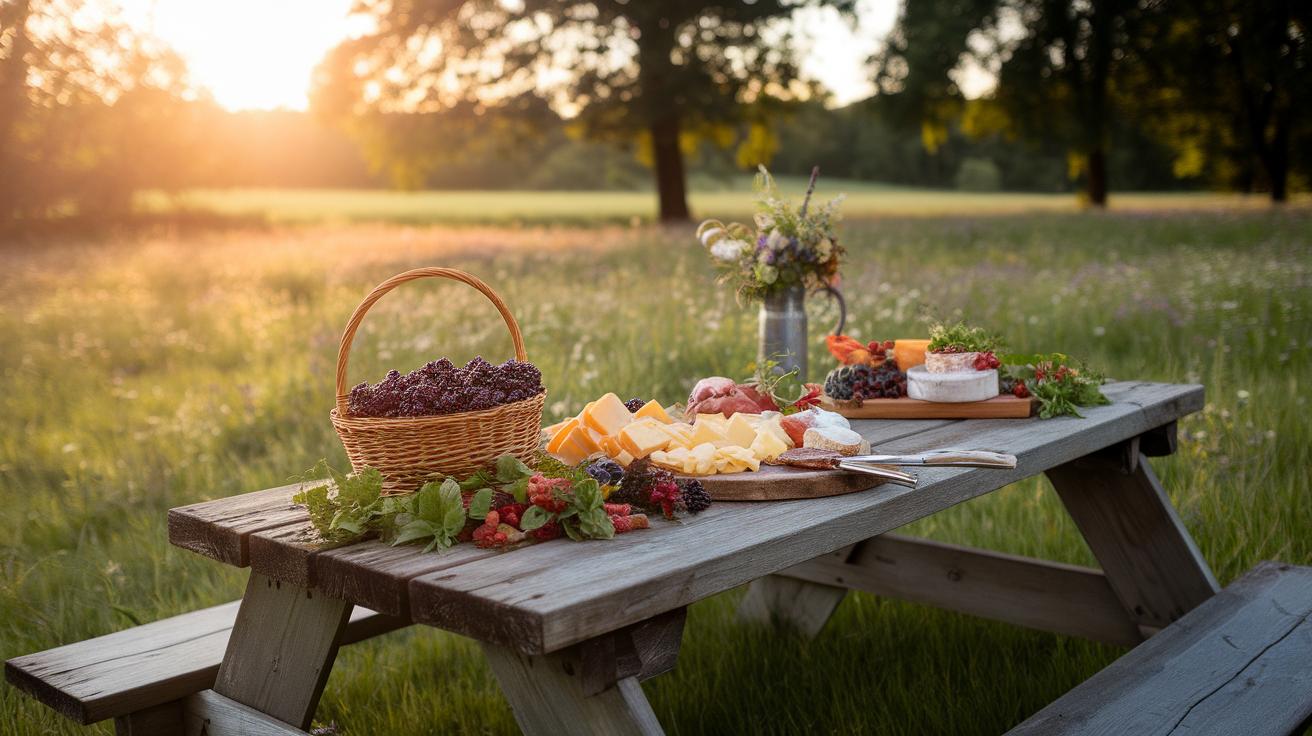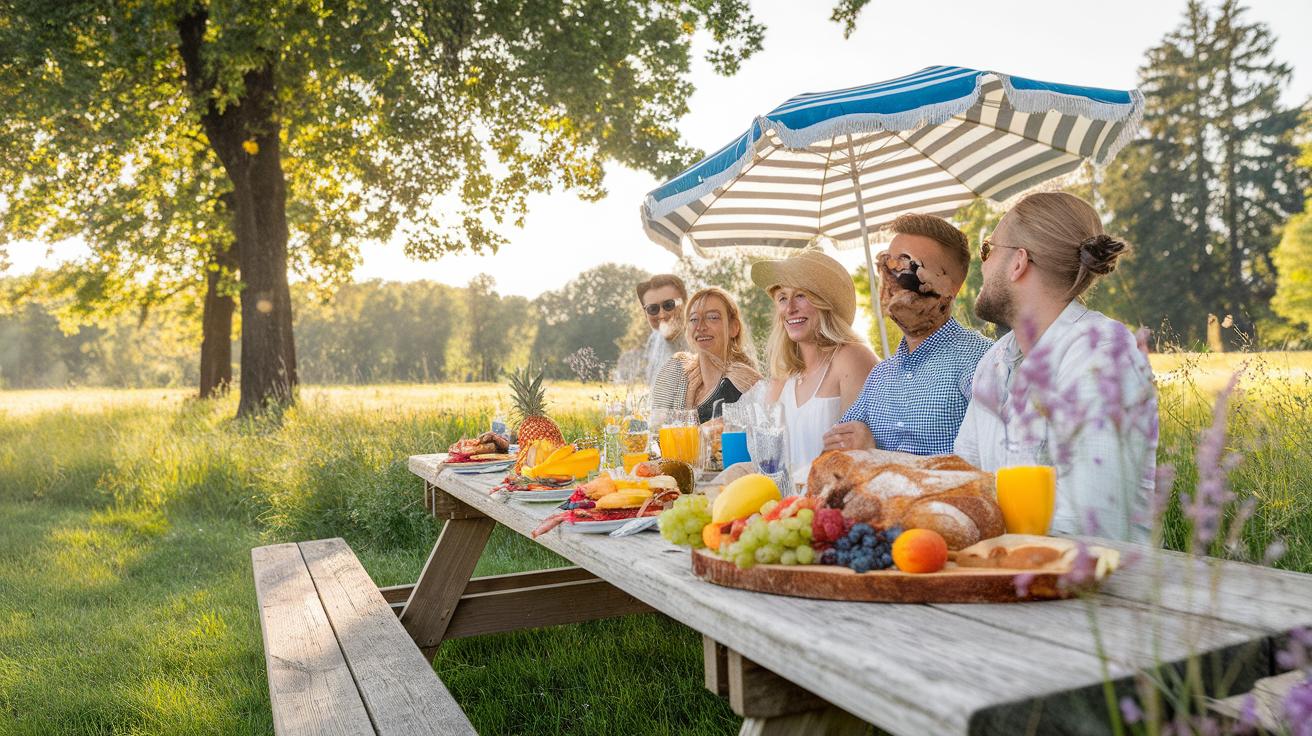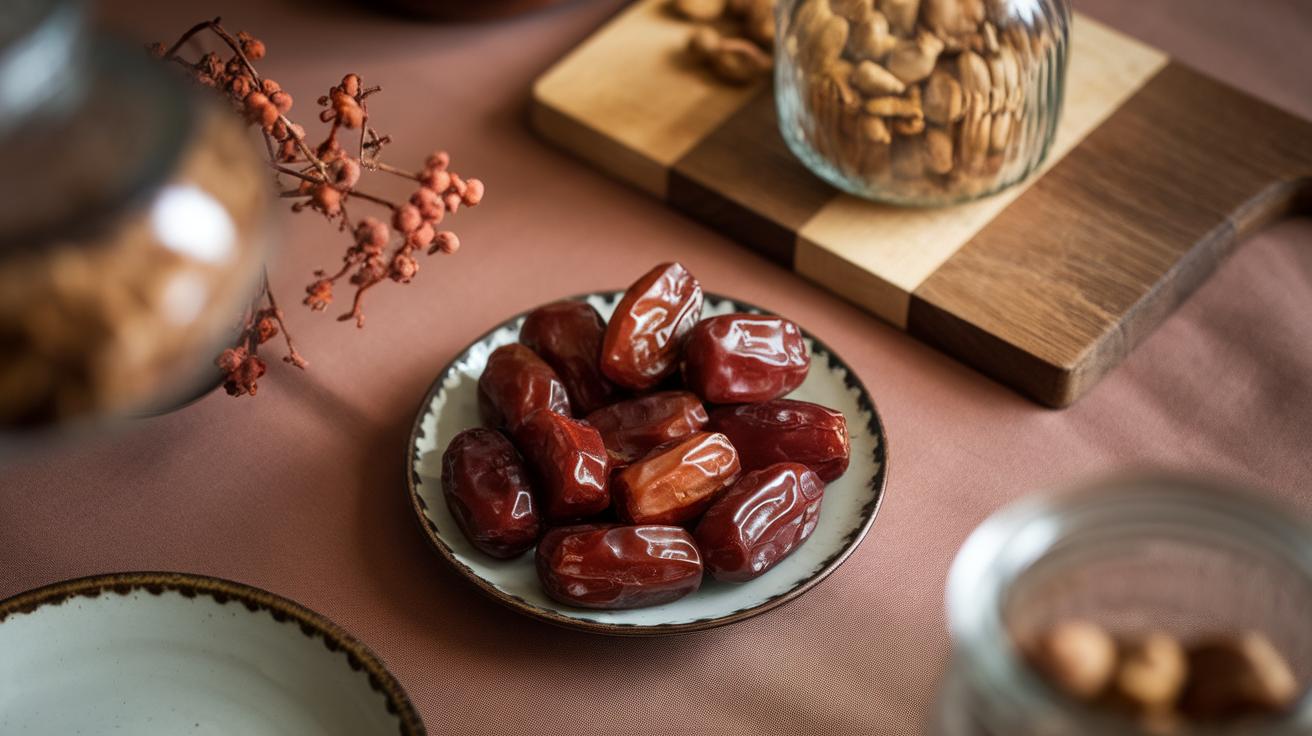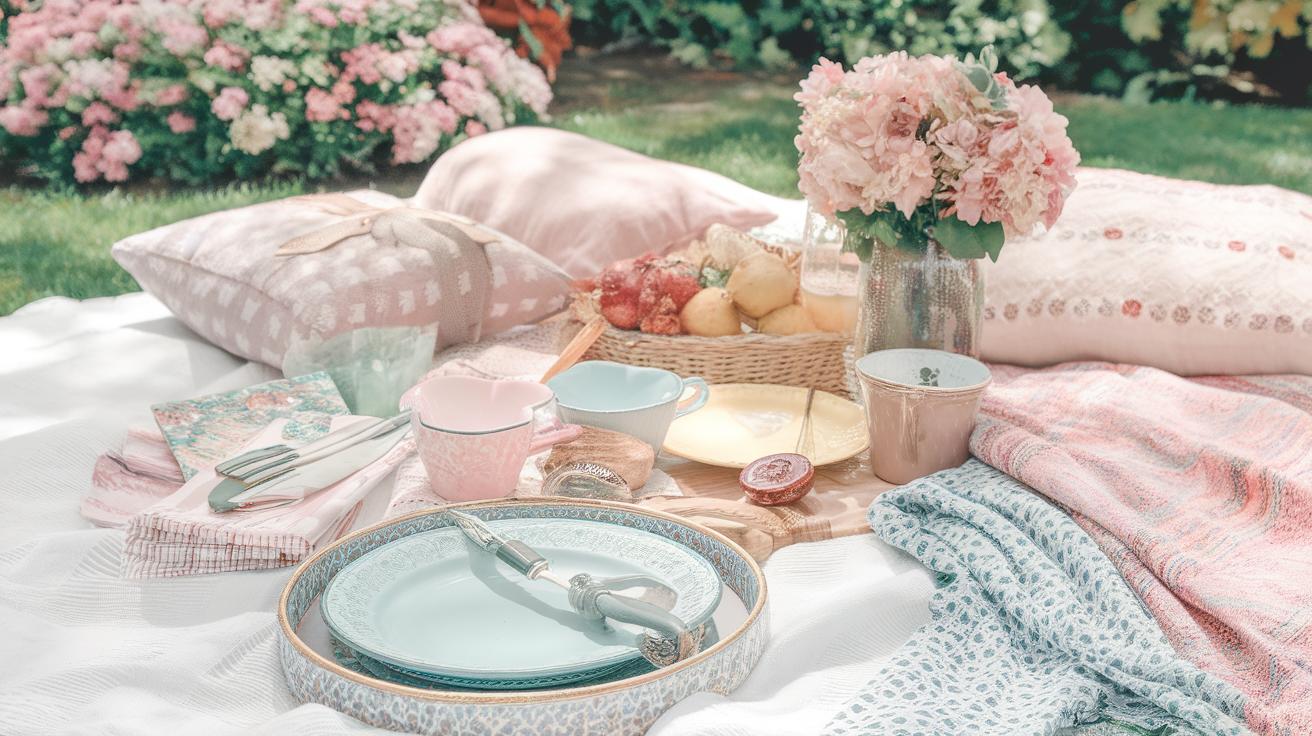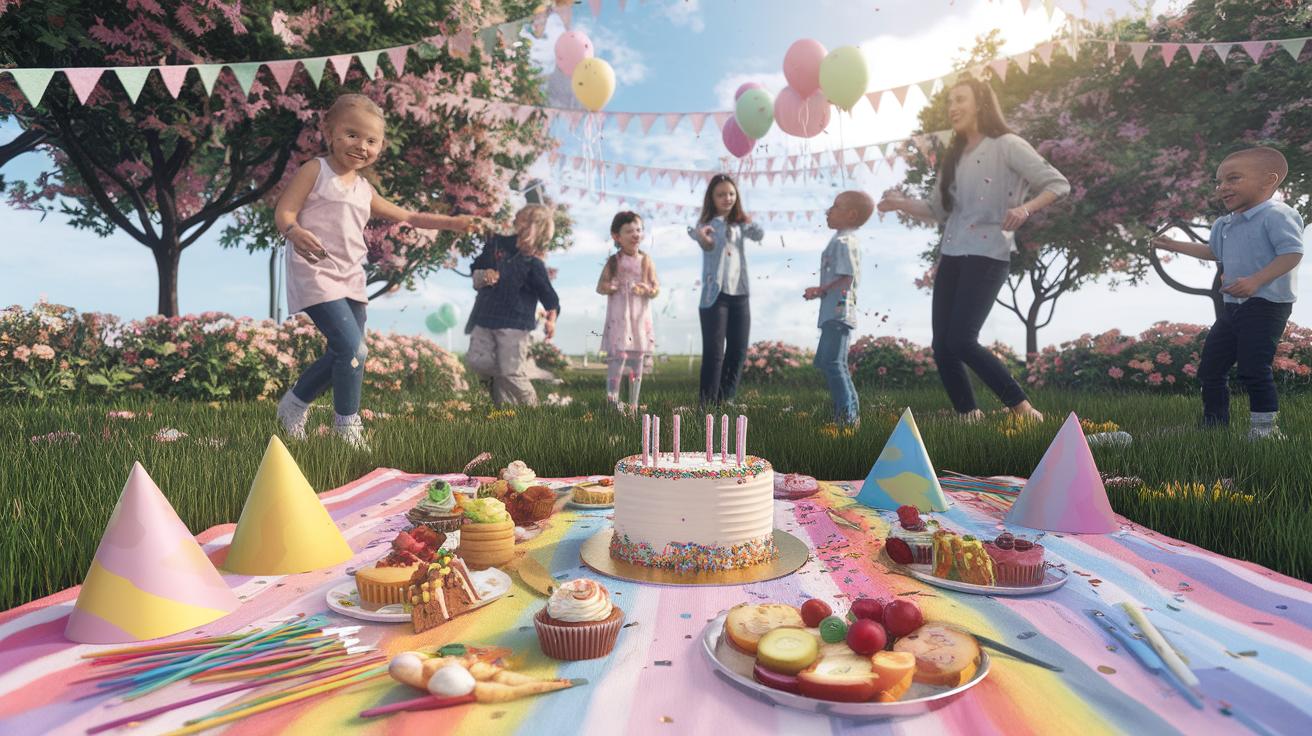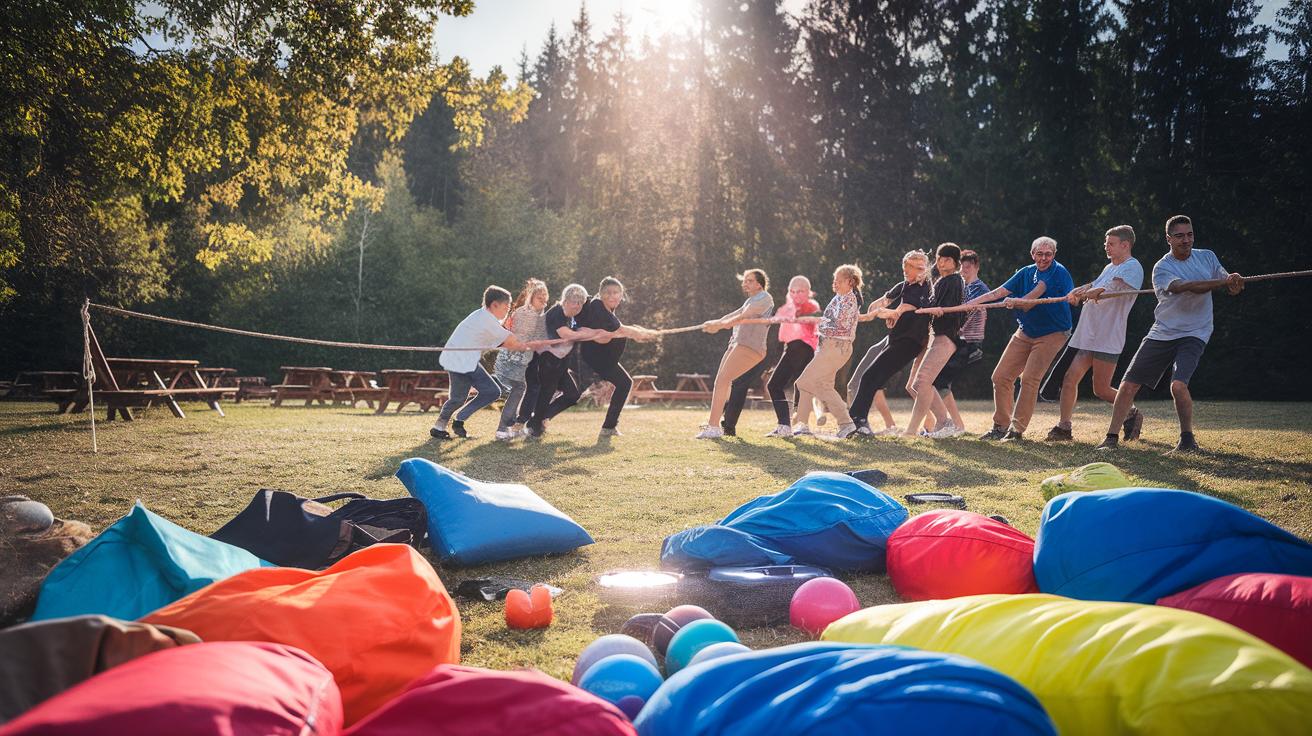Introduction
The English tea party is a classic social event that dates back to the Victorian and Edwardian eras in the United Kingdom. It traditionally involves enjoying tea alongside an assortment of light foods such as sandwiches, scones, and pastries. Hosting a tea party offers an opportunity for intimate conversation, relaxation, and socializing with friends and family. You can follow the historical practices or add your own creative touches to make your tea gathering special.
Planning a tea party picnic takes the tradition outdoors, adding a fresh and casual vibe. Picnics bring a natural setting to your tea experience, allowing you to combine the elegance of a tea party with the joy of an alfresco meal. You might wonder how to set this up, what foods to bring, and how to keep the charm of a traditional tea party in an outdoor environment. This article guides you through the essentials and inspiring ideas for both classic tea parties and charming tea party picnics.
History and Tradition of the English Tea Party
The English tea party began as a way for friends and family to gather in the afternoon. It became popular during the Victorian and Edwardian eras when people sought a social break between lunch and dinner. This tradition combined tea drinking with light refreshments and polite conversation. Tea parties were formal events where guests dressed smartly and followed strict etiquette. Using fine china and silverware was common, which added elegance and respect to the occasion.
Guests expected to behave politely, pouring tea for others and following table manners. The setting often included embroidered linens and fresh flowers. These details created an inviting and refined atmosphere. The tradition remains strong, inspiring modern tea parties where guests can enjoy a taste of British culture.
Origins of the Tea Party
Tea arrived in England in the 17th century but became a social ritual in the 19th century. The practice of afternoon tea is credited to Anna Russell, Duchess of Bedford. She found herself hungry between lunch and dinner and asked for tea and light snacks. This routine soon spread among the aristocracy and middle class. Tea symbolized sophistication and a chance to connect with others. It became a daily habit that shaped British social life.
The English tea party reflected the influence of the royal household. Queen Victoria’s fondness for tea helped popularize it across all social classes. Tea drinking was not just about the drink itself but a way to show manners, hospitality, and status in society.
Typical Food and Presentation
Traditional English tea parties serve finger sandwiches filled with cucumber, smoked salmon, or egg salad. Warm scones arrive with clotted cream and strawberry jam. Cakes and pastries, like Victoria sponge or lemon drizzle, add sweetness to the occasion. A variety of teas such as Earl Grey, Darjeeling, or Assam complement the food.
How you present these foods shapes the experience. Fine china sets, polished silverware, and crisp linens create a formal table. The tea pot might be a family heirloom or a delicate porcelain piece. Cups and saucers coordinate with the plates, showing care for detail. This solid presentation turns a simple snack into a special moment worth savoring.
Planning Your English Tea Party
Choose a date that suits most guests, avoiding busy weekends or holidays. Aim for a mid-afternoon time, typically between 3 and 5 pm. Keep the guest list manageable—between 6 and 12 people allows for relaxed conversation. Send invitations at least two weeks ahead, using elegant cards or digital invites that match your theme.
Select a venue that fits the mood and weather. If hosting at home, use your dining room or garden. Renting a small, charming space works well for larger groups. Plan the table setting with fine china, napkins, and silverware in mind. Add a centerpiece like fresh flowers to enhance the look.
Pick teas that offer variety: black, green, and herbal varieties cover most tastes. Choose foods that balance sweet and savory, such as finger sandwiches and pastries. Create a welcoming atmosphere with soft background music and comfortable seating. How will you make your guests feel at ease and excited to join?
Setting the Scene
Consider your venue carefully. Hosting at home brings comfort and control over the environment. If the weather is good, an outdoor garden or patio adds natural charm. For a unique touch, try a rented tea room or small event space with character.
Keep decorations simple yet inviting. Use fresh, seasonal flowers in small vases to add color without clutter. Soft lighting like candles or string lights creates warmth. Background music, such as classical or gentle jazz, should stay low to encourage conversation.
Arrange seating to promote interaction, placing guests in small clusters. Can you add subtle details like vintage teacups or embroidered napkins that reflect tradition? These small touches can make your party feel both elegant and comfortable.
Choosing the Menu
Start by asking if guests have dietary preferences or restrictions. Offer a mix of traditional and unique items to cater to all tastes. Classic finger sandwiches with cucumber, egg salad, and smoked salmon remain popular and easy to prepare.
Include sweet treats like scones with clotted cream and jam, along with biscuits or mini pastries. For a twist, try infusing tea into recipes—tea-flavored cakes or macarons impress guests. Incorporate vegetarian or gluten-free options to ensure everyone can enjoy the spread.
Match teas to the food, offering lighter teas with delicate sweets and stronger blends with savory bites. Think about presentation—using tiered trays creates an attractive, accessible display. What menu choices will reflect your style while pleasing your guests?
Etiquette and Social Customs
English tea parties follow a set of social customs that create a calm and respectful atmosphere. Patience plays a big role in the flow of the event. You wait your turn quietly when tea is poured or food is served. Politeness affects how you speak and behave around others, making sure every guest feels welcomed and valued. Your attitude toward the experience matters more than rushing through it. The way you handle small details, such as how you sit or engage with others, reflects your respect for the tradition. These customs also help you focus on enjoying the company and the flavors of the tea. Would you consider how your actions affect others during your next tea gathering?
Manners at the Tea Party
Holding a teacup requires some attention. Keep your pinky down and hold the handle between your thumb and index finger. Avoid gripping the cup tightly. Pour milk or sugar before tea if you prefer, but follow your host if unsure. When your cup runs low, gently lift your teacup toward the teapot as a silent sign for a refill. Use the spoon quietly when stirring, and always place it on the saucer afterward. Take small bites of finger sandwiches or pastries without talking. Eating politely means no elbows on the table and no loud chewing. How you behave shows respect for the tea and your hosts.
Conversation and Dress Code
Choose light and pleasant topics to keep the mood friendly. Discuss books, travel, hobbies, or recent events, but avoid heavy subjects like politics or personal troubles. Asking open questions encourages everyone to share. Keep your tone cheerful and listen as much as you speak. Regarding dress, match the event’s formality. Casual tea parties allow smart jeans with a nice blouse, while formal gatherings call for dresses or suits. Hats or gloves can add charm if you want a classic look. How might your outfit affect the feel of the event you host or attend?
Introducing the Tea Party Picnic
A tea party picnic blends the formality of an English tea gathering with the relaxed nature of an outdoor picnic. It takes the classic tradition outside, allowing you to enjoy tea and treats amid fresh air and open spaces. This mix brings a casual charm to the usual tea setup.
The tea party picnic removes many restrictions of indoor hosting. You can customize the experience based on the setting and the weather. This flexibility means you can dress comfortably, bring varied seating, and choose more informal table settings without losing the tea party’s essence.
When planning outside, consider weather conditions, insect control, and the ease of carrying supplies. These factors affect both comfort and presentation. With the right preparation, hosting a tea party picnic creates a memorable way to connect with friends and nature while honoring timeless tea customs.
What is a Tea Party Picnic
A tea party picnic combines the elegance of a traditional English tea with the simplicity of an outdoor meal. Instead of sitting at a formal table indoors, guests gather on blankets or portable chairs, surrounded by nature’s backdrop. This change in setting offers unique benefits.
Fresh air helps guests feel relaxed and refreshed as they sip tea. The casual environment lowers any pressure to maintain strict etiquette. Scenic views like gardens, parks, or waterfronts add visual pleasure that complements the food and beverages.
Do you want your guests to enjoy a break from routines while savoring fine teas and light snacks? This format invites both the comfort of a picnic and the style of an English tea party, making it an accessible and enjoyable option for many occasions.
Choosing a Location
Selecting the right spot sets the tone for your tea party picnic. Look for parks, gardens, or lakesides that offer clean, quiet spaces with natural beauty. Easy access is important, especially if you carry fragile teaware or delicate foods.
Check if the location provides picnic tables, benches, or flat areas suitable for laying out blankets. Shade and shelter options can protect your group from sun or sudden weather changes. Consider nearby restrooms and parking convenience to keep the experience hassle-free.
Would a blooming garden attract the bees too much? Is a lakeside view worth a longer walk with your tea set? Thinking through these details will help you pick a spot that balances comfort and the idyllic atmosphere your tea picnic deserves.
Planning and Packing Your Tea Party Picnic
Planning a tea party picnic takes careful thought. Begin by choosing a location that offers shade and comfortable seating. Think about the timing; mid-morning or early afternoon works best for tea and snacks. Prepare your menu ahead, making sure to select foods that handle travel well. Arrange your tea and utensils the day before to avoid last-minute stress.
When packing, protect delicate items like teacups and pastries with soft cloth or padding. Use sturdy containers to prevent squashing or spills. Keep cold items chilled by placing frozen gel packs beneath food containers. Carry your tea in a thermos to maintain warmth or chill bottles if serving iced tea.
Consider the size and weight of your picnic basket to keep carrying easy. Ask yourself if you have included everything needed without overpacking. Will you be able to manage fragile items during transport? Planning these details prevents surprises and keeps your tea party picnic delightful from start to finish.
Preparing Your Picnic Basket
Your picnic basket should hold all essentials in an organized way. Fold a clean, flat blanket that’s large enough for guests and food. Pack enough utensils for each person, including spoons, forks, and teacup spoons. Bring cloth napkins to add a touch of charm and absorb spills.
A small teapot or thermos is essential for serving tea. Use sturdy teacups that won’t easily tip or break. Food containers with tight lids keep sandwiches and pastries fresh and prevent crumbs from spilling.
Place heavier items at the bottom and lighter items on top to avoid crushing. Reusable ice packs help maintain coolness when needed. Think about your route to the picnic spot. How will you carry the basket comfortably? Preparing your basket well saves time and keeps your tea party picnic smooth and enjoyable.
Menu Choices for the Picnic
Opt for finger sandwiches like cucumber, egg salad, or smoked salmon. These classic choices hold up well during transport and fit the tea party theme. Include fresh fruit like berries or grapes, as they add color and are easy to share.
Bring pastries that remain tasty without refrigeration, such as scones, madeleines, or shortbread cookies. Avoid overly moist cakes or anything that risks getting soggy. If you want variety, small quiches or savory tarts work well too.
For drinks, include options beyond traditional tea. Sparkling lemonade, iced herbal tea, or a light fruit punch are refreshing choices. Offering a caffeine-free option ensures everyone enjoys the picnic. Which of these menu ideas match your taste and your guests’ preferences? Thoughtful choices make your tea party picnic inviting and memorable.
Hosting Tips for a Successful Tea Party Picnic
Timing plays a key role when hosting an outdoor tea party picnic. Aim for mid-morning or mid-afternoon to catch mild weather and natural daylight. Avoid the hottest parts of the day to keep guests comfortable.
Choose serving methods that suit your outdoor setting. Use tiered trays or stackable containers for easy access and space saving. Consider pre-pouring tea into small, lidded cups to reduce spills and speed up service.
To keep the classic charm alive, add simple touches like floral tablecloths, mismatched china, or delicate napkins. These create a warm, inviting atmosphere despite being outdoors.
Planning a few light games or quiet conversation starters encourages interaction without overwhelming your guests. Have you thought about which activities best fit your group?
Focus on small details to maintain elegance, such as placing sugar cubes and lemon slices neatly or offering different tea choices labeled clearly. These details show care and enhance the experience.
Serving and Setting Up
Set up your tea area with comfort and efficiency in mind. Arrange a low table or picnic blanket with cushions around it to encourage relaxation. Make sure there’s enough room for everyone to reach tea and snacks easily.
Organize your supplies by keeping tea, cups, plates, and snacks within arm’s reach. Use baskets or small boxes to group items and avoid clutter.
Pour tea carefully to avoid messes and consider bringing a portable tea cozy to keep your pot warm. Offer finger foods like cucumber sandwiches, scones, and small cakes that are easy to eat outdoors.
Clear serving containers with lids protect snacks from bugs and the elements. Think about using small plates and napkins for each guest to keep things tidy.
Keeping Guests Comfortable
Plan for sudden weather changes by bringing umbrellas or a pop-up canopy to create shade and shelter. If the sun is strong, sunglasses and sunscreen can make a big difference.
To handle insects, pack citronella candles or natural bug spray. Place these around your seating area before guests arrive to avoid interruptions.
Offer soft cushions or foldable chairs to improve seating comfort, especially if the ground is hard or uneven. Consider blankets for guests who might feel chilly.
Keep refreshments fresh by providing cold water or iced tea alongside hot options. Are there any special dietary needs among your guests? Preparing for those shows thoughtfulness and care.
Staying attentive to small comfort points helps everyone enjoy your tea party picnic without distraction or discomfort.
Creative Additions to Enhance Your Tea Party
Decoration and Theme Ideas
Choose floral patterns to bring natural beauty into your tea setting. Fresh flowers or printed napkins set a gentle tone. Vintage teapots and lace tablecloths add an old-world charm. Consider seasonal decorations, like autumn leaves or spring pastels, to fit the time of year. Small details, such as string lights or personalized place cards, make the space feel thoughtful. How can you use everyday items like teacups or trays to build your theme? Simple touches often create the strongest impression and make guests feel welcomed.
Activities to Engage Guests
Offer light games that suit a relaxed gathering. Classic tea party quizzes or “guess the tea flavor” challenges spark conversation. Create a playlist filled with soft jazz, classical pieces, or acoustic tunes to set a calm mood. Invite guests to share short stories or memories linked to tea for a personal touch. Could you prepare a few questions or prompts in advance? Keeping guests involved this way encourages connection and keeps the atmosphere lively without overwhelming the event.
Adapting Tea Parties for Modern Lifestyles
Your schedule and space play a big role in planning a tea party today. Traditional tea parties can feel long and formal, but you can trim the event to fit into a busy day without losing its charm. Instead of a full afternoon session, consider a 30-minute tea break with carefully chosen treats. This way, you still enjoy good company and conversation, but in a more manageable time frame.
Small living spaces or outdoor spots call for flexible setups. Use compact tables or trays to serve tea and snacks without crowding your area. Choose tea blends and finger foods that don’t need reheating or complex preparation to make hosting easier.
How can you maintain the spirit of an English tea party while making it practical? Focus on simple elegance—a favorite tea, a couple of tasty bites, and thoughtful conversation. That captures the heart of the tradition while fitting your modern life.
Quick and Easy Tea Party Ideas
You can plan a delightful tea party with minimal effort. Start with pre-packaged teas or tea bags from trusted brands. This cuts steeping time while keeping flavor intact. Buy ready-made scones or sandwiches from local bakeries. Arrange them on beautiful plates to keep presentation elegant.
Use disposable or reusable tableware that looks stylish but saves time on cleanup. Pick a small selection of treats instead of an elaborate spread. Invite a few close friends instead of a large group to keep the ambiance cozy and manageable.
What would happen if you hosted a 20-minute tea party? You might find it easier to relax and enjoy the moment instead of stressing over details. This approach rewards both host and guests.
Dietary Adaptations
Offering gluten-free, vegan, or other dietary options shows care without sacrificing taste or style. For gluten-free guests, choose almond flour scones or rice flour cookies. Substitute butter and cream with coconut or nut-based alternatives for vegan dishes. Bright fruit salads or vegetable sticks can replace heavy snacks.
Keep presentation simple yet inviting. Use separate serving dishes to avoid cross-contamination and label food clearly. Flavor your teas with lemon, mint, or cinnamon to add variety without allergens.
How can you balance tradition with dietary needs? Focus on quality ingredients and thoughtful replacements that honor the tea party spirit. Everyone deserves to taste and enjoy these special moments.
Conclusions
Hosting an English tea party or a tea party picnic is about more than just tea. It’s about creating moments to enjoy simple pleasures with those you care about. Paying attention to the details in your tea selections, food offerings, and setting can help make your event memorable and enjoyable. You are encouraged to use your creativity to bring your own style and charm to this timeless tradition.
Whether you opt for an indoor gathering or a picnic in a scenic spot, the key is in planning and thoughtful execution. Consider your guests’ preferences, the atmosphere you want to create, and the flow of your event. By focusing on these elements, your tea party or picnic can be a delightful event that encourages conversation, connection, and relaxation. Are you ready to gather your friends for a charming tea experience?





